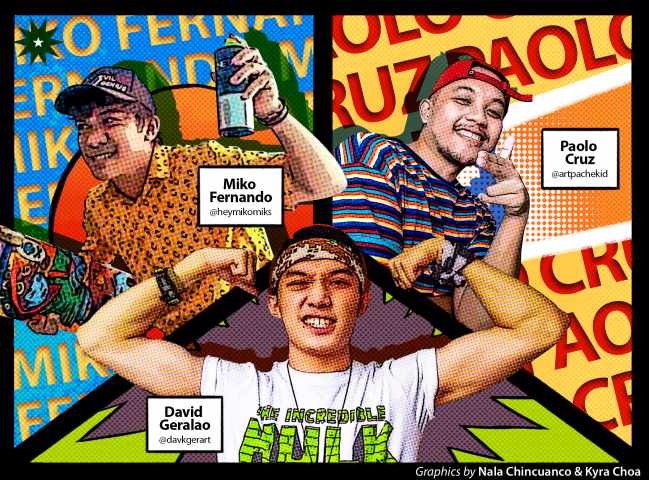
Leaping off the pages and onto the silver screen, comics have had an undeniable impact on pop culture—from being a staple in many a childhood to inspiring people in fighting social injustice through art and storytelling. Straying away from recognizable Western publications such as DC and Marvel and their Asian counterparts like manga, comic book publishers like DrawINK serve as a prime example of how the local comic book scene has flourished in recent years.
Unlike large-scale commercial publications, DrawINK, De La Salle-College of Saint Benilde’s official comic book illustration and enthusiast organization, is run independently through self-funding, but much like other local comic book publishers, they share their works in local comic communities, gaining traction from social media and small followings. Art Head David Geralao, founding President Paolo Cruz, and Vice President of External Affairs Miko Fernando currently manage DrawINK, who continues to spotlight upcoming artists within the local community.
The local comic issue
Being a fairly new local publication, DrawINK and the people behind it are no stranger to the everyday struggles of working in the local comic scene. “There’s only little pay sometimes,” Fernando says. “It’s even hard to just break even.”
But the local comic book community is not as scarce as one thinks; in fact, Fernando admits that they often find themselves competing “to stand out [in a] sea of local comics in order to be seen”.
Despite the local comic book community’s diverse and exciting stories, getting readers hooked remains a challenge. “Majority of local consumers are automatically more attracted to international content than local [content],” Cruz laments.
Lacking the big budget and high-profile endorsements that more-established publications have, local comic book artists instead turn to online platforms to gain exposure. Using social media, they often share their works with their peers, and with each like and share they gain, attention spreads, expanding their connections further.
However, these can only go so far, and artists also have to contend with boosting their social media analytics to spread their work beyond their usual circles. “Social media algorithms are a tough system to work around when it comes to people even seeing or liking my posts,” expresses Geralao, who found it difficult to their work to those with no personal connection to them.
Behind the paperback
Despite these setbacks, the local comic scene continues to be one of optimism and diversity because of the community behind it. Comic conventions like Komikon and online fan groups serve as intimate avenues for artists to share their work and for fans to share their thoughts and opinions. The community, despite having a relatively niche demographic, has been dedicated to nurturing creativity among its creators and inspiring others to make a start in the scene.
This willingness to listen to people from all walks of life is also seen in the comics they create. As Geralao explains, “My favorite quality about the community is [its] inclusivity. These creators have vastly open minds with regards to the diversity of the characters they feature—[such as] members of the [LGBTQ+], the working class, women, children—and the art styles they take inspiration from—some from American comics, and some from manga.”
With comic books’ increasing influence on popular culture, most notably in film such as in the Marvel Cinematic Universe and the DC Extended Universe, Geralao has noted an increase in attention toward local comic books as well. While the attention might prove to be advantageous for local artists, he hopes that newer audiences will not have unreasonable expectations.
“Filipino viewers also tend to have a mentality of negatively comparing our local superheroes to that of more popular Western ones,” Geralao notes, adding that drawing such comparison can “stunt an artist’s confidence” and negatively impact their growth as a creator.
Bird’s eye view
Geraldao, Cruz, and Fernando have all had personal struggles as artists and seen firsthand the issues plaguing the local comics scene. Nevertheless, the passion these artists have for their craft continues to drive them to persevere in the face of insurmountable odds—perhaps no different from the heroes that adorn the panels of comic strips.
“They don’t know how much sacrifice, effort, and practice it takes to create something ‘easily,’” Cruz says, arguing that the value of art in society, as intangible as it may be, is integral to the culture of entertainment that we enjoy today. “Without art, there’s no entertainment, and without entertainment, people won’t be inspired and our day-to-day lives won’t ever feel the same.”
